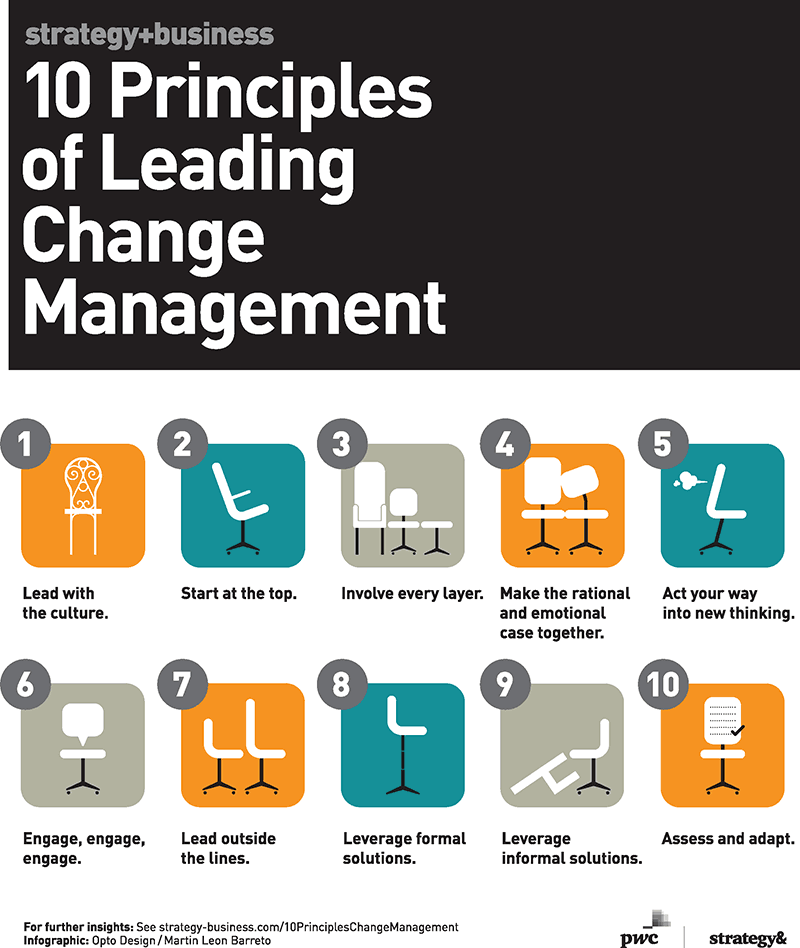Product adoption is a change management challenge. You're building something incredible. But it's so hard to get people to use it. You know they'd find it valuable once they understood how it worked and started applying it to their workflow, but your users don't get over the learning curve...
The process behind product adoption is the same process our brains go through while adjusting to any kind of change.
Humans are programmed to stick to their comfort zone, and anything new requires an increased cognitive load. As Daniel Kahneman explains in his book Thinking, Fast and Slow, we have the same energy pool for trying new things as we do for going to the gym, eating healthily, or feeling happy.
So it's no mean feat to get people to adopt your product into their lifestyle. Sometimes you get lucky and someone is perfectly ready and primed for your solution. It fits, and you takeoff. Most other times, you have to chip away at it.
New products, as well as new features in a familiar product, introduce change for a user. And we're here to draw on the best practices for helping people deal with it.
We'll review the key principles of change management, learn how large organizations manage changes, and consider how this can help you drive better product adoption. But first, a definition of product adoption and why it's important to consider.
What is product adoption?
Product adoption refers to the process of discovering your product, finding real value in it, implementing it into a regular workflow, and becoming an active user. When you launch a new product or a feature, there's typically going to be five different stages of the product adoption curve. Represented visually, the product adoption curve looks like this:

Understanding these five adoption phases can drastically help your SaaS business with growth
When your product marketing team knows how your product adoption works, they can adjust product messaging, as well as the timing and placement of campaigns, to score higher product and feature adoption rates.
Within a sales and marketing process, product adoption may sound like a vague concept, but it's actually a very specific stage. Roughly, that process can be summarized in five stages towards adoption:
Awareness: A prospective customer knows your product exists.
Interest: The prospective customer goes in search of more information.
Evaluation: The prospective customer evaluates your product against the alternatives.
Trial: The customer uses your product for a short amount of time or in a limited capacity.
Adoption/Rejection: The decision is made whether to make a mental or financial investment in your product.
Adoption isn't a guaranteed outcome, no matter how optimal your sales and marketing processes are. It's just one branch of the last stage of the funnel.

All of the money you put into raising awareness, ranking content in search, and hand-holding leads through the trial process can easily go to waste if the user doesn't end up managing the mental shift required to adopt a new product.
To look at it in a way that puts you in control, you need to manage that change for them.
Applying change management principles to product adoption
Change management is a significant topic for large organizations that are attempting to transform themselves to better adapt to their current environment. Therefore, it's been a significant field of study for strategy and organizational consultants.

PwC Strategy published these somewhat cryptic principles on how to lead change at large organizations.
Creating user habits is a change management problem, and we can draw some great insights and parallels from these.
10 key principles of change management applied to product adoption
1. Lead with culture
💡Key insight: Skilled change managers always make the most of their company's existing culture. Instead of trying to change the culture itself, they tap into the way people already think, behave, work, and feel to provide a boost to the change initiative.
👉 How it applies to product adoption: Evaluate the culture of your product and users - do they expect and appreciate changes to your product? Are they early adopters? What mediums do they prefer to communicate through?
Instead of trying to force your messages in a cadence that you consider best, leverage the systems they are already familiar and comfortable with.
2. Start at the top
💡 Key insight: All successful change management initiatives start with a committed and well-aligned group of executives strongly supported by the CEO. Work must be done in advance to ensure that everyone agrees about the case for the change and the particulars for implementing it.
👉 How it applies to product adoption: There are two interpretations here:
Ensure that when you're releasing a product or feature update, you are fully aligned across your executive, product, marketing, and customer success teams so that you agree it's a change worth making.
If you are a B2B solution and have significant changes, then ensure your stakeholders are aware and invested in helping the new product be adopted across your customer team.
3. Involve every layer
💡 Key insight: Strategic planners often fail to take into account the extent to which mid-level and frontline people can make or break a change initiative. The path of rolling out change is immeasurably smoother if these people are tapped early for input on issues that will affect their jobs.
Frontline people tend to be rich repositories of knowledge about where potential glitches may occur, what technical and logistical issues need to be addressed, and how customers may react to changes. Although it may take longer in the beginning, ensuring broad involvement saves untold headaches later on.
👉 How it applies to product adoption: Run your product in beta testing! Provide an opportunity for your regular and power users to preview changes and provide feedback. Solicit input, make updates (and demonstrate you listened) before a broader rollout.
4. Make the rational and emotional case together
💡 Key insight: Leaders will often make the case for major change on the sole basis of strategic business objectives, but they rarely reach people emotionally in a way that ensures genuine commitment to the cause.
Human beings respond to calls to action that engage their hearts as well as their minds, making them feel as if they're part of something consequential.
👉 How it applies to product adoption: Ensure your product positioning and messaging is not just about the features or the "HOW". You have to prioritize the value and the "WHY". Use language that helps users visualize how these changes will make them the person they want to be.

A reminder about what you're selling. Source: UserOnboard
5. Act your way into new thinking
💡 Key insight: Far more critical to the success of any change initiative is ensuring that people's daily behaviors reflect the imperative of change. Start by defining a critical few behaviors that will be essential to the success of the initiative. Then conduct everyday business with those behaviors front and center.
👉 How it applies to product adoption: Introduce new concepts with simple user interactions. If you're launching new functionality then try to bring it into the current workflow. For example, when Buffer introduced scheduling posts in advance, they simply switched the CTA button from "Post" to "Add to Queue".

Screenshot from Buffer's smart CTA change. For more examples of great UX that drives product and feature adoption, check out our Inspiration Gallery
6. Engage, engage, engage
💡 Key insight: Leaders often make the mistake of imagining that if they convey a strong message of change at the start of an initiative, people will understand what to do. Nothing could be further from the truth.
Powerful and sustained change requires constant communication, not only throughout the rollout but after the major elements of the plan are in place. The more kinds of communication employed, the more effective they are.
👉 How it applies to product adoption: Besides the new product and feature announcements within the emails and blog posts, make sure to also include relevant and contextual in-app messages to guide users through the change, help them discover the value quickly, and adopt more easily. Remember, product adoption messaging is a continuous process, not just a one-time thing.
7. Lead outside the lines
💡 Key insight: Change has the best chance of cascading through an organization when everyone with authority and influence is involved. In addition to those who hold formal positions of power – the company's recognized leaders – this group includes people whose power is more informal and is related to their expertise. Companies that succeed at implementing major change identify these people early and find ways to involve them as participants and guides.
👉 How it applies to product adoption: Use influencers! These can be you power users, product advocates or well-known product leaders. Incorporate testimonials from these people in your messaging or feature them on your landing page. This will help improve your credibility and drive product adoption.
8. Leverage formal solutions
💡 Key insight: Persuading people to change their behavior won't suffice for transformation unless formal elements - such as structure, reward systems, ways of operating, training, and development - are redesigned to support them
👉 How it applies to product adoption: The "formal elements" of your product or company include the interface, official positioning and messaging (like the website), and the normal channels of communication. Consider letting users opt-out of changes rather than asking them to opt-in, but treat that decision with care to avoid upsetting users.
9. Leverage informal solutions
💡 Key insight: Even when the formal elements needed for change are present, the established culture can undermine them if people revert to long-held but unconscious ways of behaving.
👉 How it applies to product adoption: Think about the "informal elements" of your product and company – how your customer support managers reference changes or the specific taxonomy you use to describe the product. If you can better shape the conversation between your team and your customer or between your users, then you stand a better chance of product adoption.
10. Assess and adapt
💡 Key insight: Many organizations involved in transformation efforts fail to measure their success before moving on. Leaders are so eager to claim victory that they don't take the time to find out what's working and what's not, and to adjust their next steps accordingly.
👉 How it applies to product adoption: Measure, analyze and optimize! Set your goals for success beforehand and ensure that key events are instrumented to help you assess whether users are engaging with the new features. Use this information to shape further releases and messaging.
How to measure product adoption
Product adoption isn't just about how many users have subcribed to a paid plan. There are several product adoption metrics you need to track (to be able to improve in the future, too!).
Let's dig into them:
Conversion rates: Not from a marketing point of view, here you want to measure post-signups – how many of your users actually get stuck into your product?
Product Tour completion rates: Are your users interested in learning about what your product does? (Psst. Keep your product tours short or your completion rates will be skewed – a 10-step tour is enough to send anyone to the exit tour button).
Time to value (TTV): How long does it take new users to discover real value and reach key activation points in your product e.g. launching their first campaign or creating their first dashboard?
Product adoption rate: How many new active users did you get? How you define active is up to your org – but the equation here is simple.

How to improve product adoption
Tools make processes and systems much easier to adopt and implement, and with a plethora of SaaS solutions available, here are some of our favorites to manage change and boost product adoption.
Get to know your users
The more you know them and the more feedback you can get, the easier it will be to pre-empt their reactions and create a well-suited product adoption plan.
Tool to help you with this:
Calendly: To easily schedule meetings with customers
Lookback: helps you run user tests for prototypes or betas
Zoom: For video calling and screen sharing
Plan and manage launches
Getting your own team on the same page is crucial for getting your product messaging correct and coordinating all channels.
Google Docs/Sheets: A simple solution for collaboration. Alternatives can be Quip or Coda.
Trello: For a visual organization of tasks and projects
Product Hunt: An early-adopter community to launch and gather feedback
Analyze your product
Segment: To instrument your product analytics, it frees you to turn other tools on and off
Mixpanel: To create audience cohorts, run experiments, and analyze product data
Heap: For automatic event collection so you can review results retrospectively
FullStory: To watch how users navigate your product and features
Communicate changes
Intercom: Send emails and engage in chat with users in your app
Buffer: Schedule posts across all your social channels
Chameleon: For in-product tours, messages, and announcmenets to guide users around your product interface
Key takeaways from the product adoption principles
People are often reluctant to change. To help your prospective customers discover, evaluate, and invest time and effort in understanding your product, you’ll need to manage their expectations. In other words, you'll need to master change management.
We borrowed the key principles from the change management theory and explained how they can help you manage product adoption throughout the various phases and stages.
Key takeaways:
Communicate your change in multiple channels, especially in-app messages to meet your users where they are and help them understand what’s new while they interact with your product
Include product leaders and influencers (both internal and external) in conversations to attract more people, build credibility, and drive product adoption
Don’t forget to measure your success and extract insights from the analysis – this will help you get to the learnings faster and be quicker in implementing the improvements
Get your whole team on the same page about the key adoption milestones, find the right channels and the right tools for your org, and help users navigate the change with ease
You can start implementing these principles right away. We hope our guide helps get you closer to increasing product and feature adoption rates.

Boost product adoption with in-app messaging
Get started free with Chameleon and harness the power of product tours, tooltips, checklists, and surveys.





